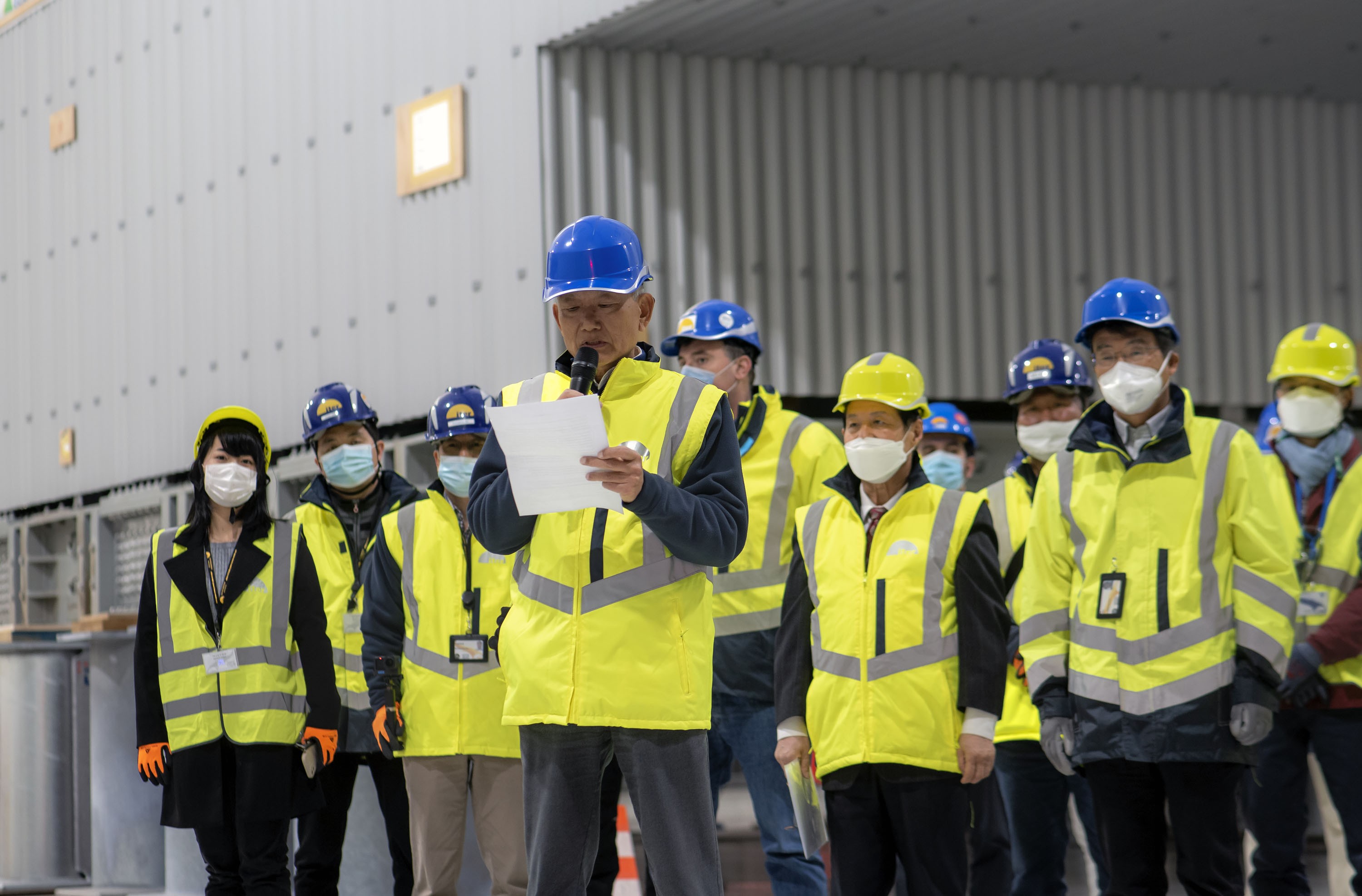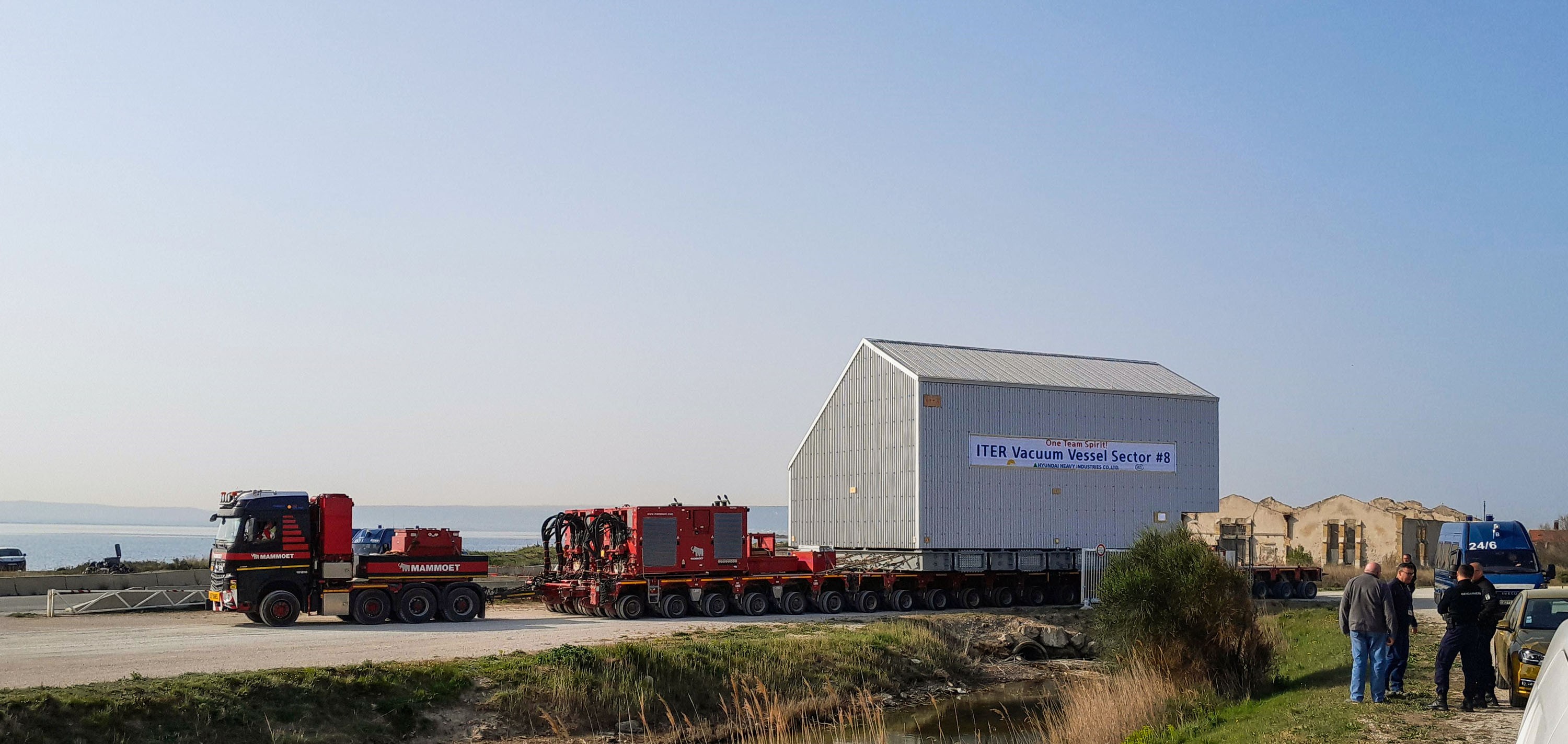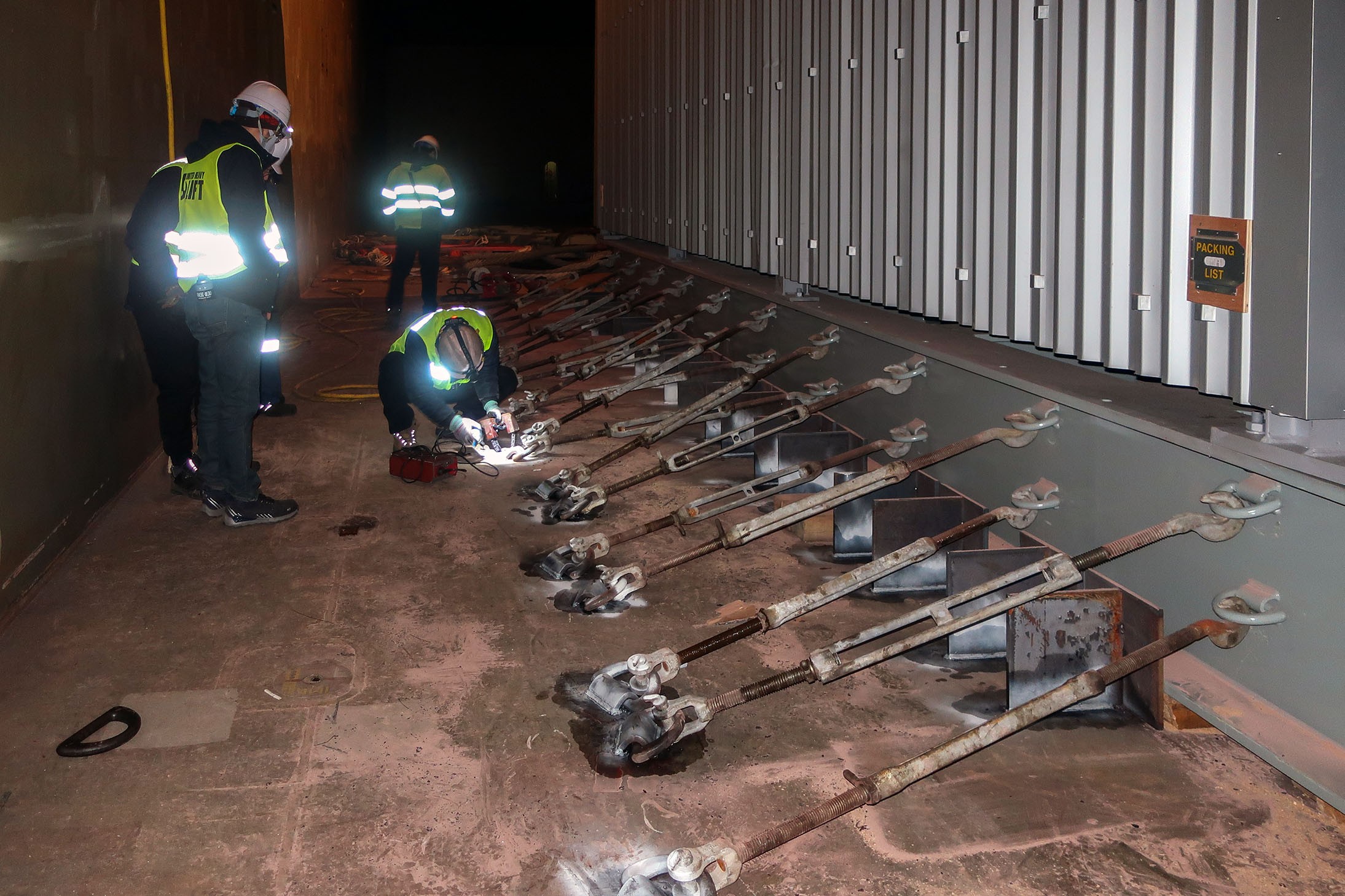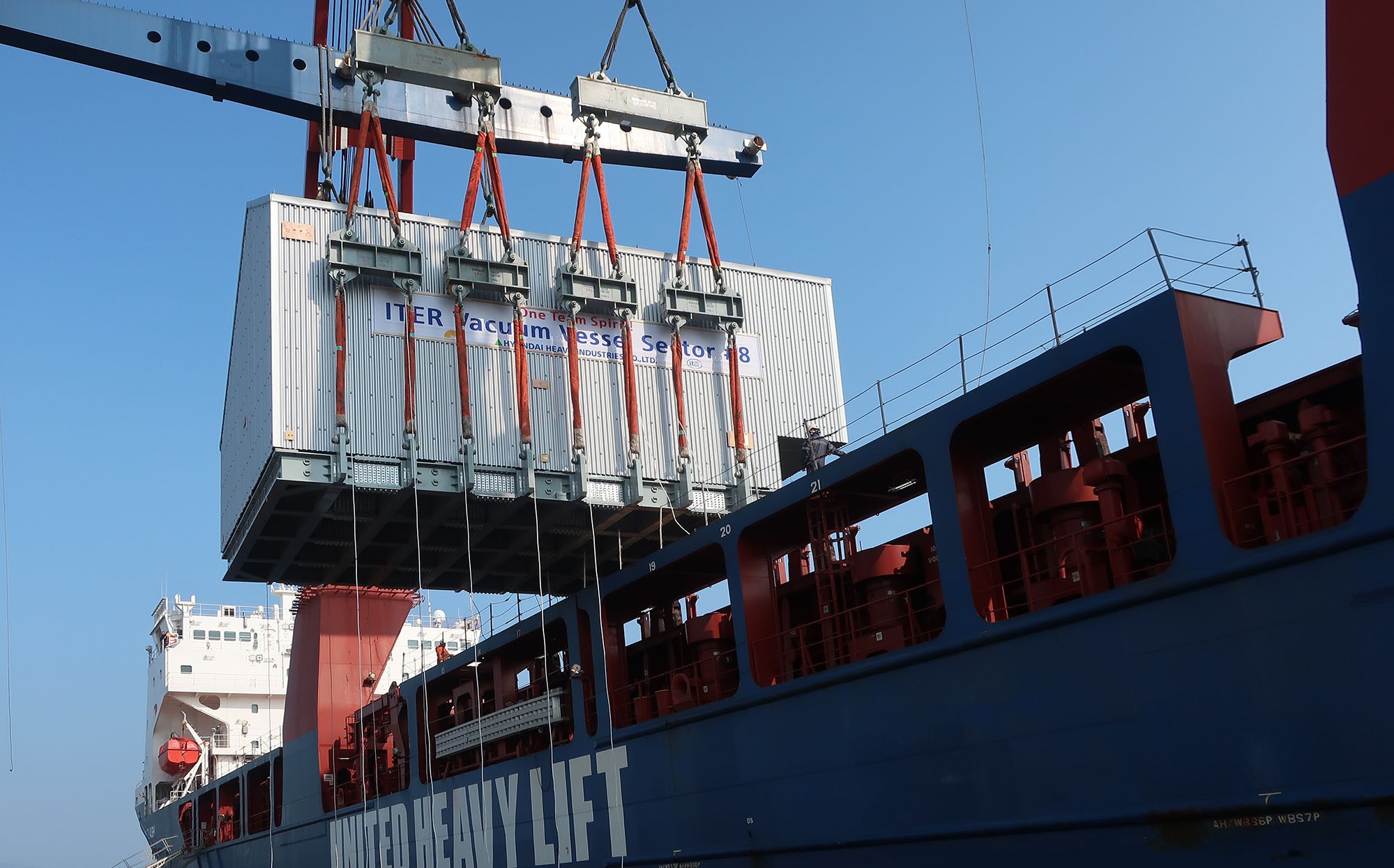Welcoming a third sector from Korea
Preparing the barge operation, both technically and administratively, mobilized the teams for almost three full days and at 10:30 a.m. on 26 January, the high-sea vessel with vacuum vessel sector #8 safely fastened in its hold began its month-long, 12,000-kilometre journey to Marseille harbour and later to the ITER site, where it arrived safely in the early hours of Friday 1 April.
As sector # 8 sat on stillage, towering above the small group gathered in the ITER Cleaning Facility to celebrate the component's delivery, pride and emotion could still be felt in Kijung Jung's voice as he narrated the details of the "fantastic emergency action" that enabled the timely delivery and thanked all those who had made it possible—especially the Korean freight forwarder Shinjo and ITER global logistics provider DAHER.
Standing as tall as a six-storey building, an ITER vacuum vessel sector is a first-of-a-kind component that combines exceptional size and extreme dimensional precision. "The manufacturing itself was much more difficult than we expected," admitted Jung.
An ITER component does not exist on its own. Beyond the expertise of its manufacturer, it is also the product of a large collaboration. "In this long process, which began in 2008 with the signature of the Procurement Arrangement, the Korean Domestic Agency has worked closely with the vacuum vessel project team here at ITER; with the European Domestic Agency that will deliver five similar sectors; with India, that provides the in-wall shielding; and with Russia, that manufactures the upper ports," said Youngeek Jung, head of the ITER Construction Domain.
Korea is scheduled to deliver the fourth and last sector in November of this year. "We will make our best effort to ensure that the remaining items that we are manufacturing, including vacuum vessel sector ##7(1), can be delivered timely and successfully," said Kyungho Park, vice-president of Hyundai Heavy Industry who joined the event through remote connection.
Although vacuum vessel sectors are now a familiar sight in the ITER Assembly Hall, their alien shape and daring mission still exert a sort of fascination: they form the chamber that will face, at a few metres distance, the heart of a star ten times hotter than the Sun.










